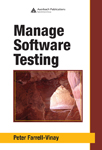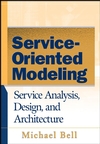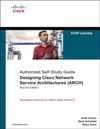本书根据软件生命期的特点,分4部分进行了阐述,即预想构架、创建构架、分析构架和从一个系统到多个系统。并且,书中通过精选的案例,进行了剖析。本书在第1版的基础上,根据软件生命期的特点,分预想构架、创建构架、分析构架和从一个系统至多个系统进行阐述。本书对第1版某些内容进行了深入介绍,并增添了一些新内容:ATAM、质量需求、构架重构、用UML对构架编档和CBAM等。 此外,本书还对一些新案例进行了分析,以帮助理解软件构架如何适应商业需求。 本书在第1版的基础上,根据软件生命期的特点,分预想构架、创建构架、分析构架和从一个系统至多个系统进行阐述。本书对第1版某些内容进行了深入介绍,并增添了一些新内容:ATAM、质量需求、构架重构、用UML对构架编档和CBAM等。此外,本书还对一些新案例进行了分析,以帮助理解软件构架如何适应商业需求。
The first edition of this book established itself as the leading book on this topic of growing importance. It was critically acclaimed (recipient of the Software Development Magazine Productivity Award) and widely embraced by customers. The second edition maintains the goals of the first edition: to define and explain software architecture, and to demonstrate, through real-world case studies, its importance for software system design. The added goals of the second edition are to bring the content up-to-date with significant developments in the understanding and practice of software architecture in the past five years. These developments include advances in architecture analysis, design, reconstruction, and documentation—advances in which the authors, through their work at the Software Engineering Institute (SEI), have played a direct and prominent role.







 评论 (1)
评论 (1) 